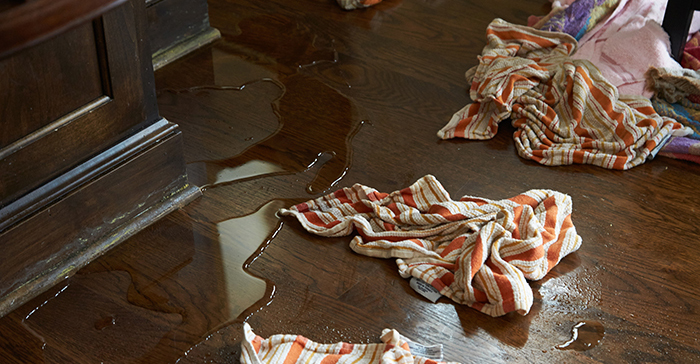A water leak isn’t something that you can ignore and hope it will go away. A leak doesn’t have to be dramatic, like from a broken water main, to cause damage. Over time, even a small leak can lead to expensive water damage and mold growth, so it’s vital to take action at the first sign of a leak. Catching a problem before it becomes worse means that the problem can be repaired easier and at a much lower cost.
Water gushing from a pipe is an obvious sign of a leak, but there are other less obvious signs of water leaking that you need to look for when you find excess moisture on your property or notice a dramatic increase in the water bill. These are a few signs of water leaks that you should check for in your home:
- Water leaks around appliances that use water, like dishwashers or water heaters;
- Corrosion on the water supply lines to appliances that use water;
- Water stains on the walls or floors below water connections;
- Water stains on the walls and ceilings directly below bathrooms;
- Discolored or warped floors, or wet spots that return after being dried;
- Broken flappers in toilet tanks;
- Leaking pipe joints or P-traps located under sinks;
- Odors coming from drains (this may be a sign of a sewer leak).
Be on the lookout for other signs like musty smells in the attic, peeling paint around skylights, damaged flashing, and crumbling drywall. These signs may also indicate other structural issues as water stains on ceilings and walls can be a sign of missing shingles and other roof problems.
Flood Safety – Kitchen Inspection Tips – Watch the Video
What To Do If You Find Water Damage
Luckily, some leaks can be repaired without having to call in professional help. A faucet that leaks might just need a new O-ring, or a toilet might need to have the flapper replaced. Both can be done with ordinary household tools. If you don’t know how to replace them, look for videos on YouTube that will walk you through the process.
A broken pipe, sewer issue, or major leak calls for professional help. You must turn off the water to the area while you wait for professionals to arrive to keep the damage from getting worse. It’s not necessary to turn off water to the entire home, unless the plumber advises you to do so.
- Sink shut-off valves are usually located under the sink, near the water supply lines. There will be two, one for hot water and one for cold. Unless there is a problem with the water going into the bathroom, you should only have to turn off one of the supply lines.
- The dishwasher shut-off valves should be located under the kitchen sink, most likely near the ones for the sink. If you have to do maintenance on the dishwasher, be sure the valve for it is clearly marked, so you know which valve goes to which line for next time.
- The shut-off valve for the toilet should be located in back of the stool, close to the floor; it should be a part of the supply line.
- If your refrigerator has a water and ice dispenser, the shut-off valves should be on the water supply tube that runs to it, either behind the refrigerator or under the nearest sink. If it’s not clearly marked, be sure to mark it for future reference.
What to Do in Case of Water Damage – Watch the Video
After you shut off the water to the affected area, mop up any standing water to mitigate the damage and get a start on the cleanup process. Mold is always a possibility after a water leak, so watch closely for it and call for professional mold remediation immediately. Professionals like those at ServiceMaster NCR have the training and equipment to safely remove all traces of mold without spreading it or infecting themselves and others.
At the first sign of water leaks in your home or business in Alexandria, VA or Washington, DC, call the highly trained experts at ServiceMaster NCR for water damage restoration services. With over 30 years in the restoration business, we have seen and restored almost every type of disaster scene imaginable. We remove excess water, dry and dehumidify, disinfect and deodorize, and restore and repair all types of structural elements and content. We also find mold and remove all traces of it before it can cause serious health problems.
ServiceMaster Water Damage Restoration Services – Watch the Video
Water damage restoration costs vary, depending on the amount of water in the building, the amount of damage caused, and the presence of mold.













